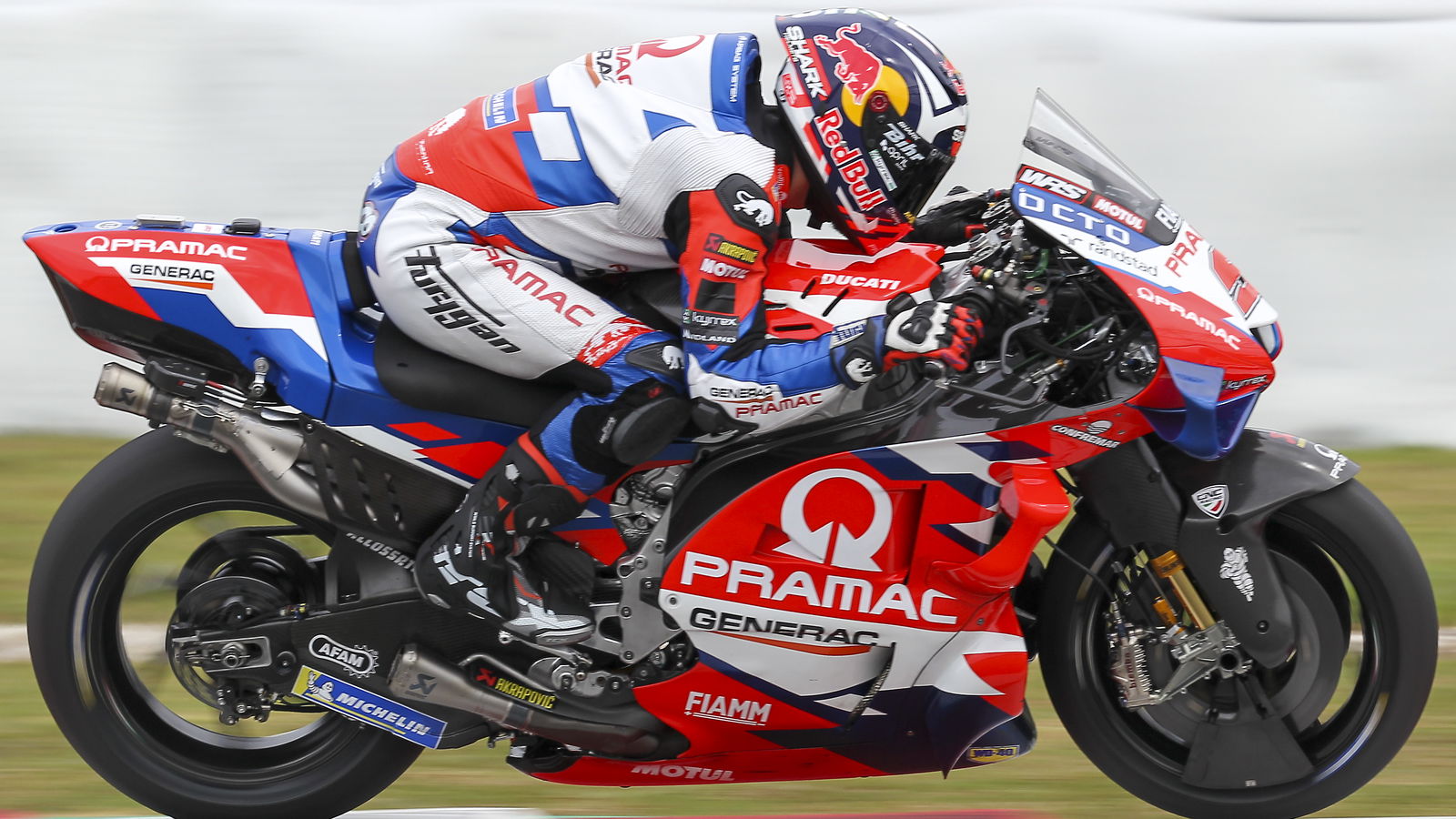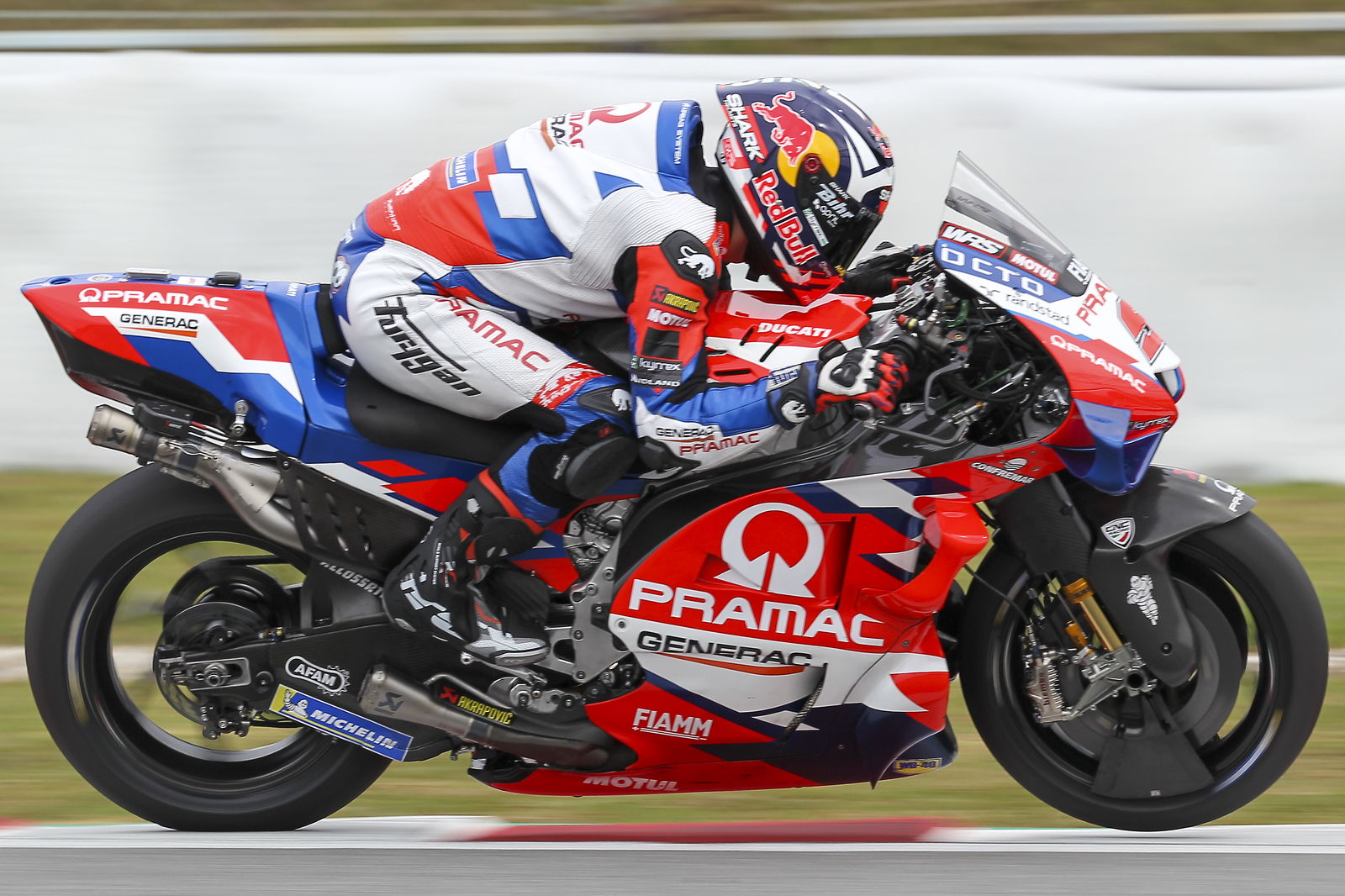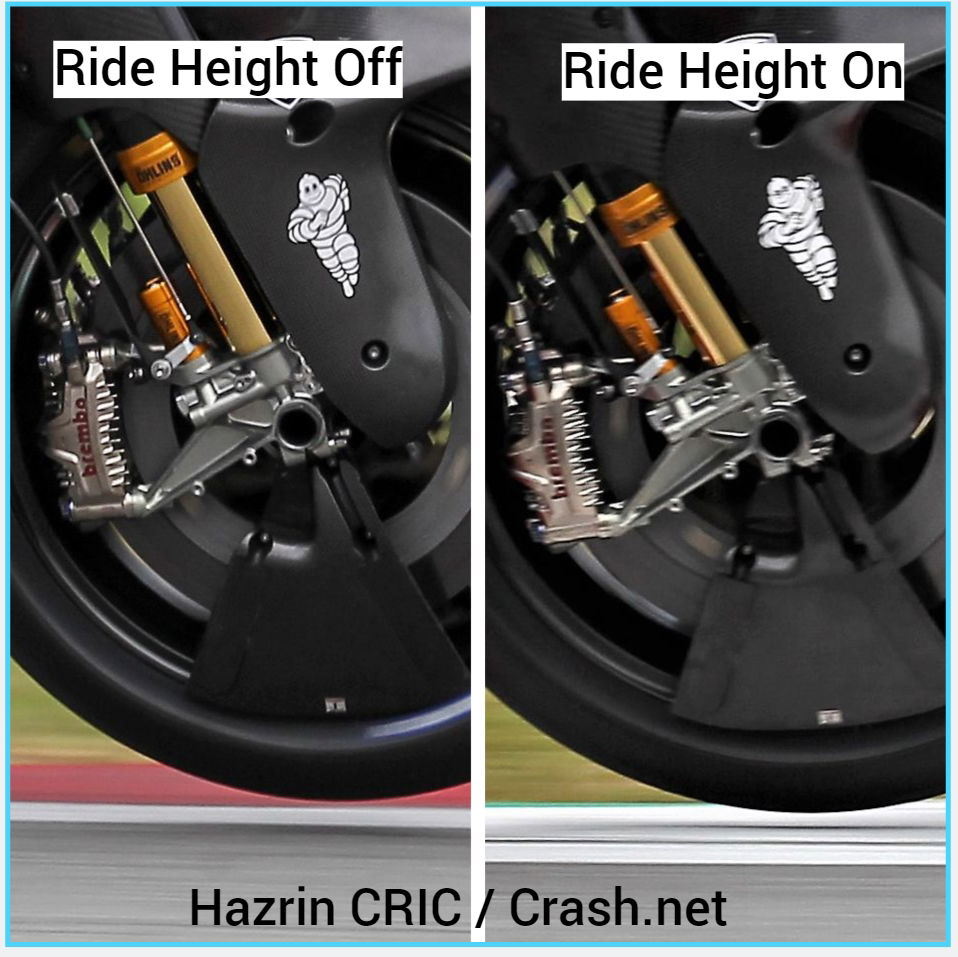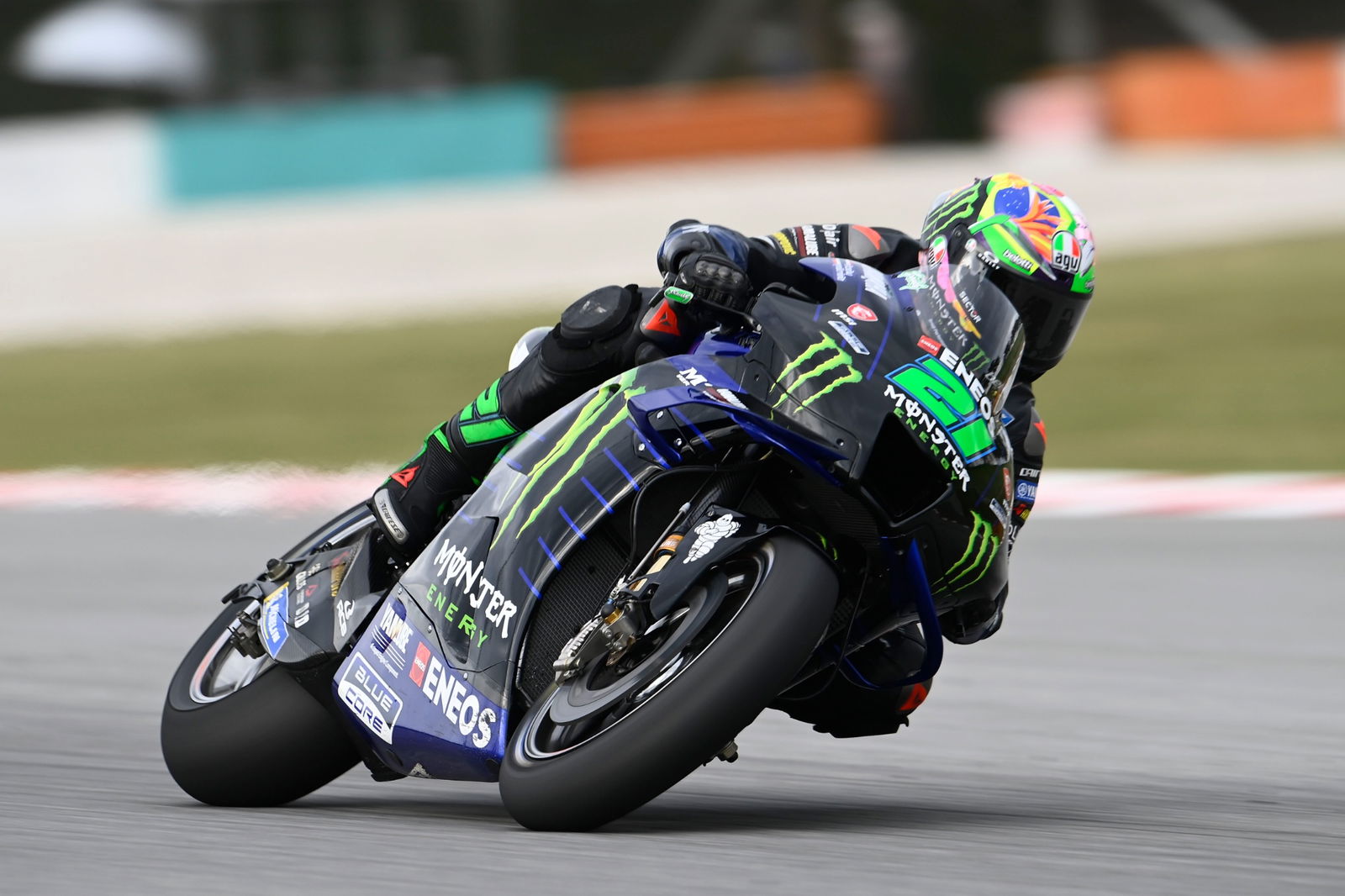PICTURES: Ducati's new MotoGP front ride-height system on track

Following yesterday's story on Ducati's updated front ride-height system, photographer Hazrin Yeob Men Shah has trawled through his Sepang MotoGP testing archive and found exactly what we were looking for: The same Ducati GP22, with and without the latest ride-height system in use, at the same corner.
These pictures show Johann Zarco exiting Turn 14 without the ride-height system and then with the ride-height system deployed (most obvious from the compressed rear suspension):

Above: Zarco exits Turn 14 without the ride-height system engaged. Below: Zarco exits Turn 14 with the ride-height system engaged (pics: Hazrin CRIC).

While the gap between the front wheel and bodywork gives an indication of what is happening, as described yesterday the thing to focus on is the amount that the lower front fork leg (gold) is extended in each picture:

In both shots the front wheel is just off the ground and so under no load.
But while the left picture (without the ride-height activated) shows the fork fully extended in a normal uncompressed position, matching the pit lane image of the GP22 suspension shown yesterday, the right shot shows the front suspension compressed even though the wheel is not touching the ground.
That is exactly what you would expect to see from a front ride-height system and, therefore, all but confirms Ducati can now lower both the front and rear of the GP22 during corner exit (as well as at the start of a race).
The fork is not as compressed as during a practice start (see yesterday's story), but the difference on Zarco's bike is nonetheless clear compared to when riding without engaging the ride-height device.
READ: The Science behind a MotoGP holeshot device
We speculated yesterday, from the inconclusive Factory Ducati pics, that 'perhaps the front system had [already] disengaged... when the front wheel begins 'floating'. If so, might the front be used more as a cornering device, to keep weight on the tyre through the middle of the turn, than anti-wheelie on the exit?'
Today's pictures show the Ducati suspension does clearly remain in at least a partly compressed state after the front-wheel breaks contact with the asphalt, the point of maximum acceleration.
However, since the front wheel doesn't contribute further to anti-wheelie once it is off the ground, the front device has a smaller window of use than the rear and it remains a possibility that it is also an aid for front grip and turning during the earlier stages of cornering.
More will be known when more detailed footage emerges, showing exactly when the front fork is compressed, by how much at its maximum and when it is then released.
The fact Zarco has the new front system is not a surprise, with previous Pramac rider Jack Miller doing the development work for Ducati's rear holeshot/ride-height device. Once refined, it then made its way over to the Factory team. Without giving details, Zarco's team-mate Jorge Martin also spoke of "pressing the same button" to use the new front system.
The question now is, how long it will take Ducati's rivals to catch up...


